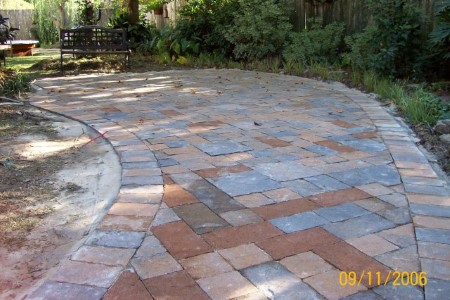Permeable Pavers in Hammond

The twenty first century has brought environmental issues to the forefront of the construction industry. Local and state governments have begun to require higher standards for the energy efficiency of buildings. They are also trying to limit the environmental impact of new construction by placing restrictions on water run off.
Governments have decided that it is imperative to limit the buildable area of lots and parcels in order to allow enough permeable areas to properly drain and filter rain water. This shift in recognizing that ground, free of cement slabs, parking lots, and driveways has begun to benefit water clarity and chemical levels in local lakes, rivers, streams, and ponds. Builders, however, make more money by building out as much of their lots and parcels as possible. The solution to these restrictions is becoming obvious to many builders and developers. Permeable pavements are the key to covering an area with pavement, yet still allowing water to filter through the pavement surface.
The most popular option of permeable pavement, less far, has been permeable pavers in Hammond. These Hammond pavers are produced with cement, just like regular concrete pavers. The difference between the two, however, is that permeable pavers are produced with larger aggregates which cause spacing, or channels, within the bricks. This separation permits water to run through the paver. Normal pavers allow about four percent of all water they absorb to soak through the bottom side. Permeable pavers, on the other hand, let up to eighty percent of all rainwater to soak through.
Permeable pavers are also installed on top of a permeable base. Contractors use eight to ten inches of large aggregate base, topped with a couple of inches of smaller stones which can be compacted and scraped level. The paver areas are basically installed on top of a large french drain that soaks up all of the water which permeates through the pavers above and filters it before entering the sub soil.
